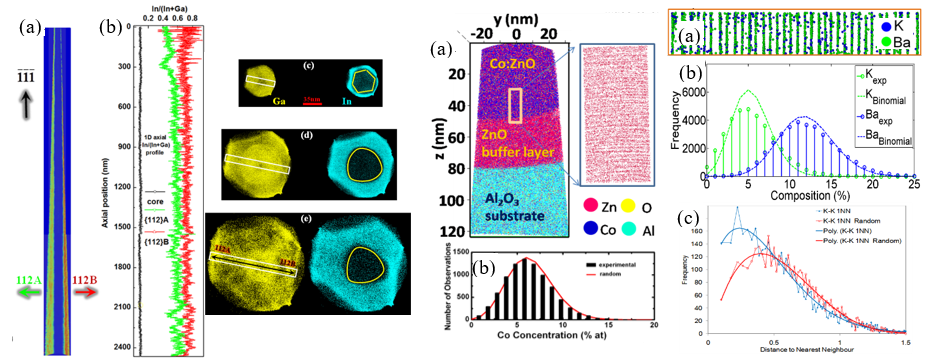Title: Atomic-scale tomography of semiconductors and superconductors
Speaker: Rongkun Zheng, The University of Sydney, Australia
Date/Time:3:00-4:00 PM, Oct. 18, 2017(Wed.)
Location: Room 202, Lujiaxi Building
Abstract:
AtomProbe tomography have been applied to solve the critical questions insemiconductor [1, 2] and superconductor [3] materials. We havedemonstrated that, in the analysis of semiconductor nanowires epitaxially grownfrom a substrate, the presence of the flat substrate positioned onlymicrometers away from the analyzed tip apex alters the field distribution andion trajectories, which provides extra image compression that allows for theanalysis of the entire specimen. In InGaAs nanowires, we have revealed andexplained: (1) Ga-rich core and In-rich shell structure was grown via differentmechanisms; (2) the decomposition rate of the group III precursors determinesthe In/Ga ratio in the core; (3) The dimension of core increases from 45 to 65nm and the shape of the core changes from a hexagon to a rounded triangle fromthe top to the base of the nanowire; (4) The In/Ga ratio and inhomogeneousdistributions of group III atoms in the {112}. In order to unravel the magnetism of Co doped ZnOfilms, we have performed rigorous experiments on Co doped ZnO grown on α-Al2O3and O-polar ZnO (0001) substrates. In both cases, atom probe tomographyconfirms a random distribution of Co ion even at the interface region. In theZnO:Co on α-Al2O3 substrate, the interaction between high density of threadingdislocation, dopants, native point defects holds the key to understand thehitherto puzzling ferromagnetism observed in wide variety of doped and undopedsemiconductors. However, in the ZnO on the O-polar ZnO (0001) substrate,hydrogen plays a key role in mediating magnetic ordering. Local fluctuations inthe distribution of dopant atoms are thought to cause the nanoscale electronicdisorder or phase separation in pnictide superconductors. Atom probe tomographyhas enabled the first direct observations of dopant species clustering in aK-doped 122-phase pnictide. First-principles calculations suggest thecoexistence of static magnetism and superconductivity on a lattice parameterlength scale over a wide range of dopant concentrations. Our results provideevidence for a mixed scenario of phase coexistence and phase separation,depending on local dopant atom distributions.

Figure: Reconstructions and analyses of semiconductor nanowire, Co doped ZnO, and pnictide superconductor.
[1]J. T. Qu et al, ACS Appl. Mater Interfaces, (2016); Adv. Mater. Adv. Mater. 2017, 29, 1701888 (2017)
[2]L. Li, et al., Physical Review B, (2012).
[3]W. K. Yeoh, et al., Physical Review Letters, (2011).